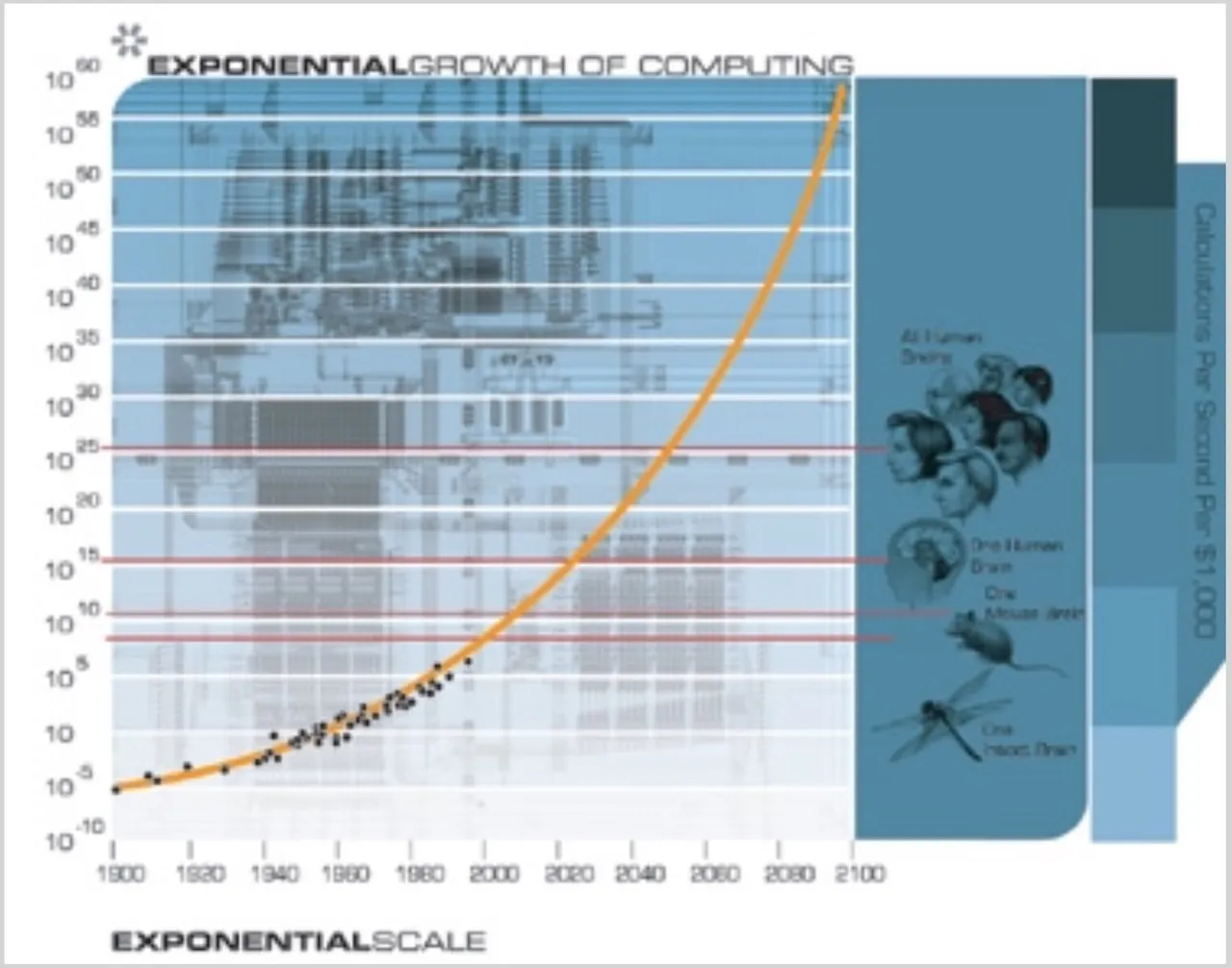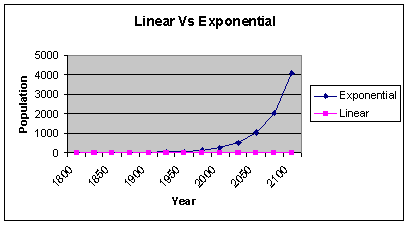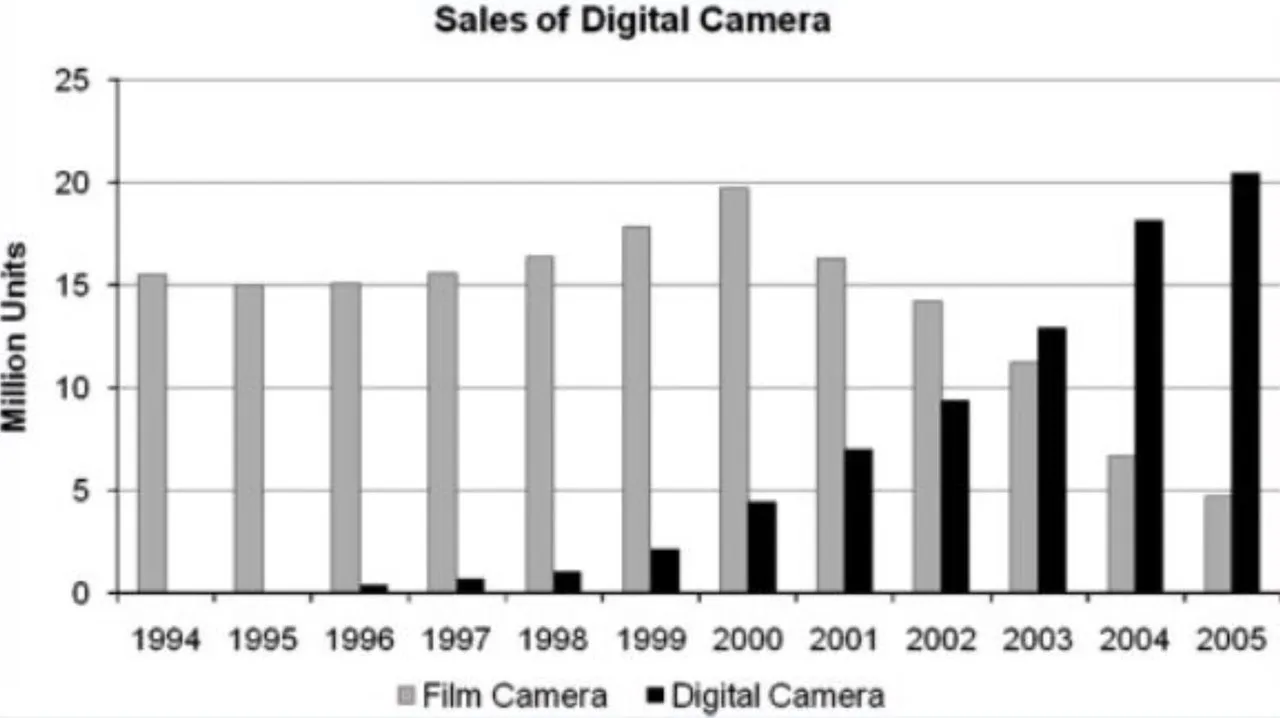
Foresight
The future of humanity is in influenced to a great extent by the interplay of two important factors--human nature and the Law of Accelerating Returns ("LAR"). Because human nature is in the aggregate predictable, and the Law of Accelerating Returns even more so, the astute among us can successfully predict certain global macro trends well in advance.
Human Nature and Herding
Human nature is predictable in the aggregate mostly because the herding instinct is a universally evolved coping mechanism. In the face of uncertainty, humans (and many other species) herd.
Because herding is so common, we can only assume it to be the product of evolution. Herding is evolution's way of guiding individual decision making in the absence of accurate or complete information. When individual actors are not confident that they know more than others, they mindlessly follow the crowd. This is true in day-to-day life, but it is especially true during periods of panic, euphoria or high uncertainty.
Herding is therefore not a sensible, rational, calculated response to a known stimulus, but rather an instinctual and unconscious response to uncertainty.
Why The Herd Moves
In the absence of a perceived information advantage, few individuals will linger for long beyond the margins of a given herd. Those who do are very confident that they know something the herd doesn't. If wrong, they quickly parish or return to the herd. But, if right, they disproportionately prosper.
In the latter case, a few others in the herd soon notice the disproportionate success of the outliers and begin to follow them. They too experience disproportionate success. This pattern repeats over and over until a tipping point is reached and the whole herd seemingly moves as one to follow the trail blazed by the initial outliers. Most Individual in the herd have no idea why or where the herd is migrating, they just follow the crowd to greener pastures.
Viewed from above, the herd's movements appear to be random, first veering one direction and then another. It can seem difficult or impossible to predict the movements of these herds. But...is it? I think not, at least in some instances.
The Law of Accelerating Returns
While humans predictably herd, technology moves even more predictably following Kurzweil's Law of Accelerating Returns ("LAR"). The Law of Accelerating Returns, of which Moore's Law is a subset, describes how all information technologies advance at predictable exponential rates. Because information gained yesterday can be used to gain even more information more cheaply today, technological progress snowballs leading to exponential growth curves and declining costs. We see this everywhere in the information sciences.
For instance, this chart illustrates the number of computations per second per $1,000 spent on computers:

Source: Ray Kurzweil
The chart above stops its plots in the year 2000, but were we to plot data points to the present day, they would, not surprisingly given Moore's Law, fit the yellow prediction line almost perfectly.
Humans are Challenged to Grasp Exponential Growth
It's odd that such predictable growth in technologies consistently surprises so many people, at least until we remember that it's only since the dawn of the Information Age that humans have regularly experienced multiple impactful episodes of exponential growth cycles over the course of a single human lifetime. Consequently, ancient man did not evolve to easily conceptualize or predict the results of exponential growth--there was simply no need.
Said another way, while we can model exponential growth mathematically in spreadsheets, humans consistently fail to account for it in our ordinary, day-to-day mental models of the world. For instance, ask the average person to quickly estimate how many doublings it would take to get from 1% to 100% and he/she will almost invariably overestimate the correct answer (which is only a little over 6).

As the chart above shows, when the time between exponential doublings is long (in relation to a human life span), as they often are in nature, it's easy for humans to mistake exponential growth for simple linear growth, or at least to severely underestimate the future impact of the observed growth. Looking at the above chart, it's not until the "knee of the curve" is reached, or approximately the third doubling from 1 percent (which in this case took centuries) that exponential growth becomes obviously distinguishable to humans from ordinary linear growth.
What We Know and What It Means
At this point we know that humans herd. We also know that herding is not rational but rather instinctual. And finally, we know that humans consistently fail to account for exponential growth in their mental models of the world. Can we use these three points of knowledge to successfully predict the future?
I think we can.
Specifically, we can predict the general direction toward which the herd will move and, maybe more importantly, from which it will move.
How to Predict the Future
The first trick to predicting the future is spotting exponential growth trends as early as possible, especially trends involving information technologies. In today's Information Age, this is not a difficult challenge in most instances.
The second trick is to recognize that exponential trends in information technology are generally antifragile and often benefit from Moore's Law (or the Law of Accelerating Returns) and network effects. This means that we can reliably assume with a high (but less than 100 percent) degree of certainty that any such trend, once sufficiently started, will persist despite the doubters and naysayers and unforeseen obstacles.
This is because antifragile systems are not just robust (in the sense of successfully resisting adverse change), they actually benefit from being stressed---that is, they rapidly evolve to counter or compensate for the effects of the stressor, making the system even more stable and secure and thereby ensuring its continued exponential growth trend.
One example of this is Moore's Law itself. For decades people have been predicting imminent demise of Moore's Law, and yet like clockwork we've consistently adapted new ways of fitting ever more transistors on a given-sized chip for the same or lower cost. Will this trend end eventually? Almost certainly. But only after nearly a century of defying predictions to the contrary and probably only after something much better comes along to replace it (like 3D computing and/or quantum computing).
Why are technological trends so antifragile? Economies of scale, network effects, ever-increasing quality and rapidly declining costs all conspire to preserve the trend until either a saturation point is reached or something at least ten times better comes along (this is often known as the "10X Principle").
In short, once we spot a technological trend early and recognize that it will likely persist in antifragile ways, predicting the future is easy. Or...at least it should be.
A Simple Example
Consider the example of digital photography versus film photography:

Armed with superior knowledge, a few adventurous members of the human herd began in the mid-1990s to favor digital cameras over film ones, and they experienced better outcomes, at least for some limited use cases. Over time, other members of the herd increasingly noticed the success of these digital outliers and began moving in that direction as well.
By 2000, a tipping point was reached: Due to Moore's Law and related technological maxims, digital camera quality was finally just "good enough" to disrupt the growth trajectory of film cameras, making the success of the digital outliers obvious to a larger percentage of the herd. Consequently, many turned that direction, drawing the attention of yet more members. Over the next fifteen years, nearly the entire herd would "go digital" en masse, decimating the sales of film cameras.
The Lesson
While the demise of film and the advent of digital seems like a forgone conclusion in hindsight, it came as a complete shock to the mainstream herd, including the film photography industry itself. During the middle to late 1990s (when the exponential growth curve of digital cameras was just becoming noticeable), film photography manufacturers remained surprisingly complacent.
One reason for their complacency is the previously-noted difficulty to mentally model exponential growth. Exponential growth often becomes evident to humans only once the "knee of the curve" is reached. Consequently, the threat to the film industry wasn't perfectly obvious to all but the most prescient until disaster was both imminent and unstoppable.
Another reason for film industry complacency was that the new digital cameras were initially fairly expensive and offered very poor image quality. Though Moore's law and related axioms would quickly close the gap, this fact was, once again, unnoticed to all but the most prescient before it was too late.
Complicating matters more, sales of film cameras continued to rise throughout the late 1990s (along with the exponentially increasing sales of digital cameras), giving legacy film manufacturers reason to believe that the two technologies could prosper side-by-side. Even if digital cameras continued their exponential growth, they wouldn't materially impact the sales of film cameras, right?
Even so, by simply spotting the exponential technological trend early and recognizing their likelihood of persisting, astute observers could have predicted the herd's ultimate move en masse toward digital photography, and they could even have gotten the timing of the mass migration almost exactly right. Furthermore, while it might have been difficult to predict which particular digital camera manufacturer (if any) would come to dominate the nascent digital photography industry, it was trivial for astute observers to predict which companies would ultimately be decimated by the change (e.g., Kodak).
Conclusion
Once we recognize the human tendency to herd and antifragile nature of many of today's innovative technologies, the future can be foretold with heretofore unknown degrees of accuracy. For instance, while it may be difficult to predict which particular blockchain or blockchain company will come to dominate, it's trivial to predict (from current growth trends) that blockchain technology will disintermediate almost everything, and which companies and institutions will be decimated as a result.
This insight into the future gives us confidence to embrace it with arms wide open.

*Arms Wide Open*
Photo credits: Me
Photo subject: @steemed-open